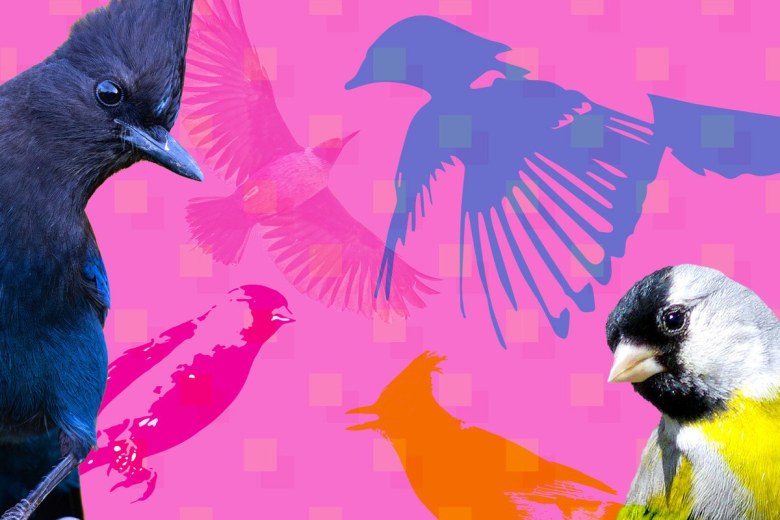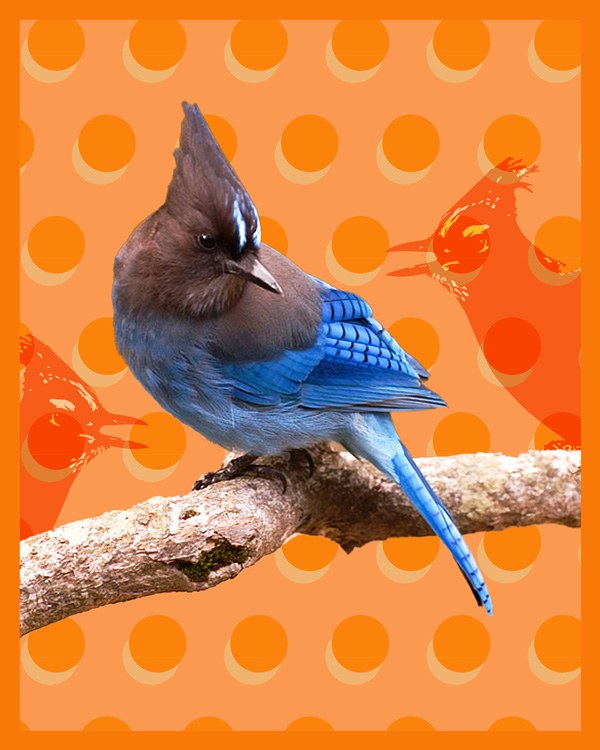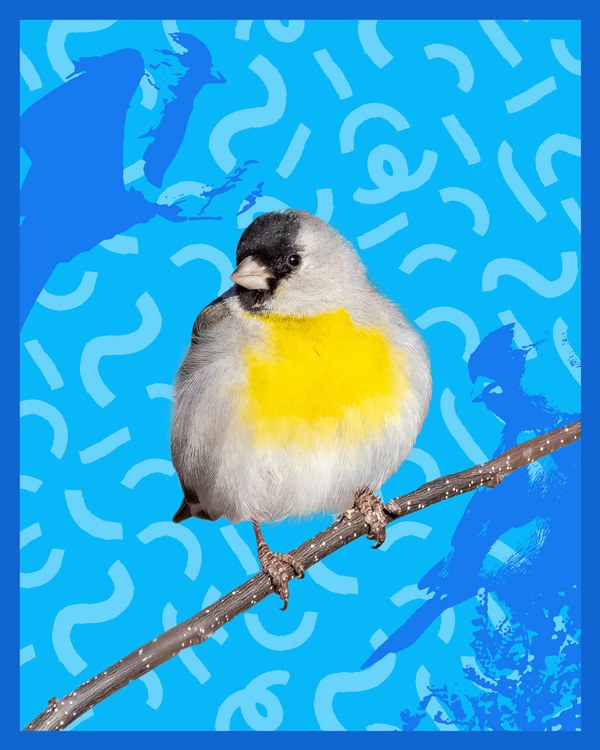A whole flock of birds will get new names in the coming year, and bird lovers of all stripes — from casual backyard watchers to serious peepers — will have a chance to help. The American Ornithological Society, the authority on North American bird names and identification, plans to rechristen species named after human beings and include public input in the process.
The society’s governing council made the decision after years of discussion on how to handle birds whose English names may have harmful or offensive historical and cultural associations. AOS President Colleen Handel said that birders should be able to study and enjoy species freely without having to hear, or use, harmful and possibly racist names. “There is power in a name, and some English bird names have associations with the past that continue to be exclusionary and harmful today,” Handel said in a statement. “We need a much more inclusive and engaging scientific process that focuses attention on the unique features and beauty of the birds themselves.”

The AOS English Bird Names Committee ultimately decided to revise all eponymous names, not just those linked to violent histories.
“We do expect the names to reflect aspects of the bird’s appearance, distribution, habitat or behavior — essentially names that describe the bird itself,” Jordan Rutter, co-founder of Bird Names for Birds, said. She hopes that the public’s involvement will spark creativity in the renaming process. “These are perspectives we haven’t had before and should allow for memorable and captivating new names.”
For example, in recent informal public polls to rename the Say’s phoebe, a small long-tailed flycatcher whose feathers shift in color from gray above to burnt orange on its belly, bird lovers came up with such evocative monikers as the mesa phoebe, cinnamon phoebe and sunset phoebe.
Avid birder Steven Hampton, an enrolled citizen of the Cherokee Nation and a retired deputy administrator at the California Department of Fish and Wildlife, worked on the AOS renaming committee. He finds great beauty in the process.
“Birds evoke. Birds can fly. They evoke freedom and independence, and our dreams and our ambitions because they can fly. And that’s universal, I think, in every culture across the political spectrum. And so that’s something that we hope can be built on.”
Want to participate in this renaming bonanza? Tell us what you think these three Western birds should be called.
Steller’s Jay:

Steller’s jays are large songbirds known for being bold, inquisitive and noisy. Easily recognized by their charcoal-and-blue plumage and distinctive triangular crest, Steller’s jays give a loud and repeated “shook shook shook shook,” but they can also vocalize a wide range of other calls and even mimic other species. The bird is often found in the coniferous and mixed mountain forests of Western North America.
Reader suggestions
| The Absolutely Stellar Jay (x2) | Blue booty jay (x2) | Crested Western Jay (x9) | Western black and blue jay | Glamjay |
| Montane Jay (x2) | Cassandra (x2) | Fingernails On A Blackboad | Mountain Jay (x8) | Blue Squawker (x4) |
| Stellar Jay (x35) | Mohawk indigo jay (x2) | Irridescent Jay | Hooded Jay (x4) | Montana Jay |
| Black crested Jay (x16) | Crested jay (x11) | Crested Gremlin | Crested Cyan | Stellar’s Jay (x4) |
| Tuffed Jay | Western blue jay (x11) | stellar (x2) | Hoodie Jay | Black hat jay |
| Screamy | Troublemaker | Sapphire jay | Cobalt jay (x3) | Bezerker Jay |
| Crested Iridescent Jay | Inkcrest (x2) | Western Mountain Jay (x2) | Brownheaded Bluejay | Black-cowled Jay |
| shook-shook jay | Crested bluejay (x4) | Shake Shake Shake Jay | Blue bleater | Knotty Jay |
| Coal crested Jay (x3) | Dark Headed Picnic Thief Jay | Dusky Jay | Convene tribal culture-bearers in SJ range & ask | Old Eye Jay |
| Crested Mountain Jay (x6) | Stellar Jay…it’s a stellar bird! | skaykay from Lushootseed (x6) | Crested Conifer Jay | Robber Jay (x2) |
| Black-crested Blue Jay (x6) | Brown crested Mountain Jay | Dancing Blue Megg Jay | Dark crowned bluejay | Mountain jay (x3) |
| Stealer Jay | mocking jay (x3) | Southwestern Jay | Cockaded Blue Jay | crowned jay |
| Western Crested Jay (x3) | Cerulean Jay | Crested Mimic Jay | Crested Blue asp | |
| Squackalots | Crested Jay | Crested Conifer Jay | Dark crowned bluejay | Sassy Jay (x2) |
| Cocoa Jay | Black-headed Jay | Black and Blue Jay (x7) | Grey Crested Blue Jay | Cosmic Jay (x2) |
| Frouning Jay | Royal Jay (x2) | Crested Cobalt Jay (x4) | Brown-Crested Cerulean Jay | Blue crested jay (x2) |
| Lapis Jay | Tri Colored Jay | Indigo Crested Jay | Gwishgwaash | Chocolate-dipped Jay |
| The Jay Agenda (x2) | Rocky Mountain Jay | Screamy | Black hatted Squakalot | black-headed blue jay |
| Midnight Jay | Capped Jay | Crested mocking jay | Scaled-jay | Sooty Jack |
| Shake jay | BB and J/Black and Blue Jay | Pine Jay (x2) | western crested forest Jay | Sneaky squaker |
| Black headed bluejay | Raucous jay | Chara | Western Forest Jay | Squacking Jay |
| Crested redwood jay | Stella’s jay | Pesky Jay | Cordilleran Jay (x2) | Mockenjay |
| monster energy drink | Bluey Jay | Punk Jay | Bold jay | Black-headed Blue Jay |
| Black crested blue jay | Bully Jay | Indigo Jay (x4) | Larry | Shooky Jay |
| Hoodie Jay | Black Crowned Jay | Pacific Shadow Jay | Brue jay | Royal Blue Jay (x2) |
| Black Capped Blue Jay | Blue black jay | Dusky-headed Jay | recticulated jay | Blue & Crest McJay |
| Western Black crested bluejay | Muffin Jay | Double-breasted mattress flapper | Black-headed blue Jay | Shake-a Jay |
| Cloaked Jay | Dee Jay | Fantastical Jay | Lapis Lazuli Jay | Pompadour Jay |
| Black crest jay | Shooketh Jay | two-toned jay | Birdy McBirdface | Stellar McSquak Face |
| Blue Screamy | Shook Jay (x2) | The All-terrain Quizbird | Sierra Jay | Tufted Jay |
| Drama Screamer | Badass Jay | Blue crowned blue jay | Dark Headed Picnic Thief Jay | Western Blue and Black Jay |
| Screamin’ Jay Hawker | Black Crested Blue Jay (BCBJ) | Stellar Western blue jay | Dark-crested Blue Jay | Black Sapphire Jay |
| Slaty Jay | Flooty Mcflooterface | mantled jay | Midnight Jay | Starry Jay |
| Conifer Jay | Blue Bossypants | Kwish-kwishee | Hollerin’ Jay | Cobalt Mountain Jay |
| Created Jay | Jeering Jay | Delta Jay | Montane Blue Jay | Blue-browed jay |
| Birdfeeder pig! | White-browed Jay | Pinstripe Jay | Coal-crested Indigo Jay | Big Sky Jay |
| Screamy Jay | Crown of the Forest | Sentinel Jay | Jester Jay | Hope Jay |
| Azure Jay | Sooty jay | Dark Crested Jay | Impersonation Jay | Black-cowled Jay |
| Name in the Indigenous languages in their range? | Western crested jay (x2) | Crested Blue Jay | Jorts Jay | Forest Jay |
| Glass Jay | Dave Colon |
Lewis’ woodpecker:

Despite its name, this bird acts more like a flycatcher than a woodpecker; its aerial acrobatics are often stunning. Its pink belly, gray collar and dark green back differentiate it from the rest of its family, and it resides in open ponderosa pine forests and burned woodlands. Normally quiet, the bird emits harsh churrs in quick succession.
Reader suggestions:
| Rosy-bellied, masked woodpecker | Collared Woodpecker (x4) | Cloaked Pine Woodpecker | Red-masked Woodpecker (x6) |
| White Guy’s Woodpecker (x3) | Pink belly Woodpecker (x3) | Grey Collared Woodpecker | Petra |
| Ponderosa Woodpecker (x10) | Bejeweled woodpecker (x3) | Rosy | Rosy Masked Flycatcher |
| Pine woodpecker | Painted Woodpecker (x5) | The woodpecker formerly named Lewis’s | Motley Woodpecker |
| Pine flycatcher | Jade-backed Rose Woodpecker | Collated woodpecker | Churring Woodpecker |
| Ponderosa Pink-bellied Woodpecker | Rose Breasted Woodpecker (x15) | Pink-bellied Woodpecker (x10) | rainbow woodpecker (x2) |
| Rose Belly Woodpecker | Flyhawking Woodpecker | Red-Black-White-Flycatcher-Pecker | Fire-follower Woodpecker |
| Gray-collared Woodpecker (x3) | Birdy McBirdface | Red-bellied Woodpecker | Watermelon Woodpecker (x6) |
| Slave Owner’s Woodcock | Rosy faced woodpecker | Rosy Bejeweled Woodpecker | Rosy Bellied masked woodpecker |
| Flashy Tourmaline Woodpecker | fly-hawk woodpecker | Rosy masked woodpecker | Green Backed Woodpecker (x2) |
| Expeditionary woodpecker | rosy wood tapper | Masked Flycatcher | Flycatching Woodpecker (x2) |
| Ponderosa Pink-bellied Woodpecker | Red-faced woodpecker (x4) | Ruby-Masked Pine Woodpecker | Red Faced Pecker |
| Ponderosa Fire Red | Fireflier | Crimson Belly Woodpecker | White Collared Woodpecker (x3) |
| Tourmaline woodpecker (x6) | Magnificent woodpecker | Rosy-bellied Woodpecker | Red-faced Acrobat Woodpecker |
| Green Winged Woodpecker | Collared Flypecker | Rose Bellied Woodpecker (x5) | Blushing Envy Woodpecker |
| Multi Colored Woodpecker | Tricolor Woodpecker (x3) | Christmas woodpecker (x2) | Roseate woodpecker (x3) |
| Dapper Flapper (x3) | Tool wielding woodpecker | Pink-and-green woodpecker | Pink bellied pine woodpecker |
| Braves Woodpecker/ Green-Army Red-Blood Gray-RIP | Flame woodpecker | ponderosa ruby woodpecker | Pajaro Carpentero |
| Rosy Breasted Woodpecker (x2) | Striking woodpecker | Ruby-Masked Pine Woodpecker | Twilights’ woodpecker |
| Preppy pecker | Holiday Woodpecker | Blood breasted Woodpecker | blush woodpecker |
| Muffin Woodpecker | Raspberry Woodpecker | Burb | Rosy Woodpecker |
| Fiery Woodpecker | Pecker pecker (PEPE 4 letter code) | Elegant woodpecker | Ruby Eye |
| Nomadic woodpecker | Ember Woodpecker | Ruby-crowned Woodcatcher | fuscia-bellied woodpecker |
| Pine woodpecker | Rosette Woodpecker | Phil | Fighting Flycatcher |
| Harlequin Woodpecker | Red Bellied Tap Tap | Jeweled Woodpecker (x2) | Rose-breasted Woodpecker (x2) |
| Rosy-bellied, masked woodpecker | Pink-bellied Aeropecker | Masked Flypecker (MAFL) | Roseate pine woodpecker |
| Pink-bellied Green Woodpecker | Monsieur Fancypants | Rosy Green-backed Woodpecker | Emerald Woodpecker (x2) |
| Carmine-fronted Woodpecker | Merlot-faced woodpecker | Green-backed Woodpecker (x3) | Pink-tummy woodpecker |
| Ruby-faced Woodpecker | Pepsi Presents: Woodpecker | Fiery Flycatcher | Ring-necked woodpecker |
| Pink bellied pine pecker | The Bullseye Flycatcher | Aerialist Woodpecker | Serene woodpecker |
| Pinkbellied woodpecker (x2) | Rose-green Woodpecker | Name in the Indigenous languages of their range | Hawking Woodpecker |
| Louie | Not Lewis’s Woodpecker | fire woodpecker | Green Back Woodpecker |
| Garnet Woodpecker | Cinder Woodpecker | Blushed Red Woodpecker | Sanguine Woodpecker |
| Ruby-fronted woodpecker | Crimson drummer of the woods | Blush Pine Woodpecker |
Lawrence’s goldfinch:

This North American songbird is a hermit that primarily resides in the arid regions of California and the desert Southwest. This goldfinch is light gray with a black face and lemon yellow on its belly, tail and wings. Its song is a series of high-pitched trills and tinkles, and it gives a distinctive “tink-oo” just before it takes flight.
Reader suggestions:
| California Gold Nugget Goldfinch | Singing lemonball finch | Calli Desert Goldfinch | Desert Goldfinch (x17) |
| Sunshine goldfinch (x2) | Emilia (x2) | Lemony snicket goldfinch | Sunspot Goldfinch (x15) |
| Goldfinch on Her Own Terms | Western yellow belly finch | Sunspot | Silver Siskin |
| Black faced Goldfinch (x13) | Yellow-breasted goldfinch (x7) | yellow breasted finch | Finchy McFinchface |
| Gray Goldfinch (x4) | Yellow Paintball Goldfinch | Southwestern Desert Goldfinch | Tinkoo goldfinch (x2) |
| Desert Hermit Goldfinch (x2) | Sun-chested Goldfinch | Masked Goldfinch | Blackface lemon goldfinch |
| Lemon-breasted Goldfinch (x9) | Buttercup Goldfinch | Blooming Goldfinch | Hermit Goldfinch (x2) |
| Sun Finch | Black-masked grayfinch | Masked grayfinch (x2) | Lemon breasted goldfinch (x4) |
| Silver Goldfinch | Desert Sunspot Goldfinch (x2) | Black-faced Finch | Sun goldfinch |
| Black-faced Siskin | Gray- naped Goldfinch | Yellow-chested goldfinch (x2) | Happy Hermit Tinkoo |
| Snowball Finch | Sunrise Goldfinch (x2) | Sunspot Finch | Yellow-winged goldfinch (x3) |
| Sonoran Goldfinch (x3) | Larry Bird | Yellow-wing Woodland Goldfinch | Yellow chested goldfinch |
| Larry’s Goldfinch | Sunny Funch | High-pitched Goldfinch | Yellow snow goldfinch |
| Tinkerbell finch | Sunbelly Goldfinch | Wandering Goldfinch | Fried-egg Finch |
| Yellow winged goldfinch | Sunhearted Goldfinch | Sunny finch | Sun-Breasted Goldfinch |
| yellow belly woodland goldfinch | yellow bellied woodland goldfinch | Golden desert Finch | Sunspot finch |
| Gold-Bibbed Goldfinch | Lemon finch | Finchy Finch | Lemondrop goldfinch (x2) |
| Lesser lemon chest | Lemony borbface | Yellow puffed tinkoo | Warbling chattybitch |
| Desert sunspot finch | Mustard Stained Finch | Sun Spotted Goldfinch (x2) | Black-masked Goldfinch |
| Southwest Goldfinch (x2) | Yellow Bib Goldfinch | Yellow breasted desert gold finch | Lemon-Chested Goldfinch |
| Tinkle Finch | yellow splotch goldfinch | Lemoncello goldfinch | Yellow snow finch |
| Butterbreast | Black-capped Goldfinch | Lemon Goldfinch | Goldenvoiced Goldfinch |
| Black-browed sun finch | Black masked sunburst finch | Sweet and sour Goldfinch | Western sunbelt finch |
| Wandering Goldfinch | Yellow bellied finch | Butter-breasted Gray Goldfinch | Lemon-bellied goldfinch (x2) |
| Name in the Indigenous languages of their range | Our Sunny Goldfinch | Southwestern Goldfinch (x2) | Sunbelly goldfinch |
| Silver Goldfinch | Sunflower Goldfinch | Least Goldfinch | Yellow Nugget Fluff Ball |
| Butter Finch | Black-headed goldfinch | Yellow Bibbed Goldfinch | Sooty goldfinch |
| Tinkoo (x2) | Yellow Bellied Little Finch | Lemon Yellowed Goldfinch | Checkerboard Goldfinch |
| Desert-gray Goldfinch | Black poll goldfinch |
Reader submissions will be updated through Feb. 29, 2024.
Image credits: Steller’s Jay photos: Steve Valasek, Steve Valasek, Michael Wifall, John Maschak. Lawrence’s Goldfinch photos: Alan Schmierer, Wendy Miller, Mick Thompson. Lewis’s Woodpecker photos: Joshua Mayer, Tara Lemezis, Frank D. Lospalluto. All images are Creative Commons via Flickr.

